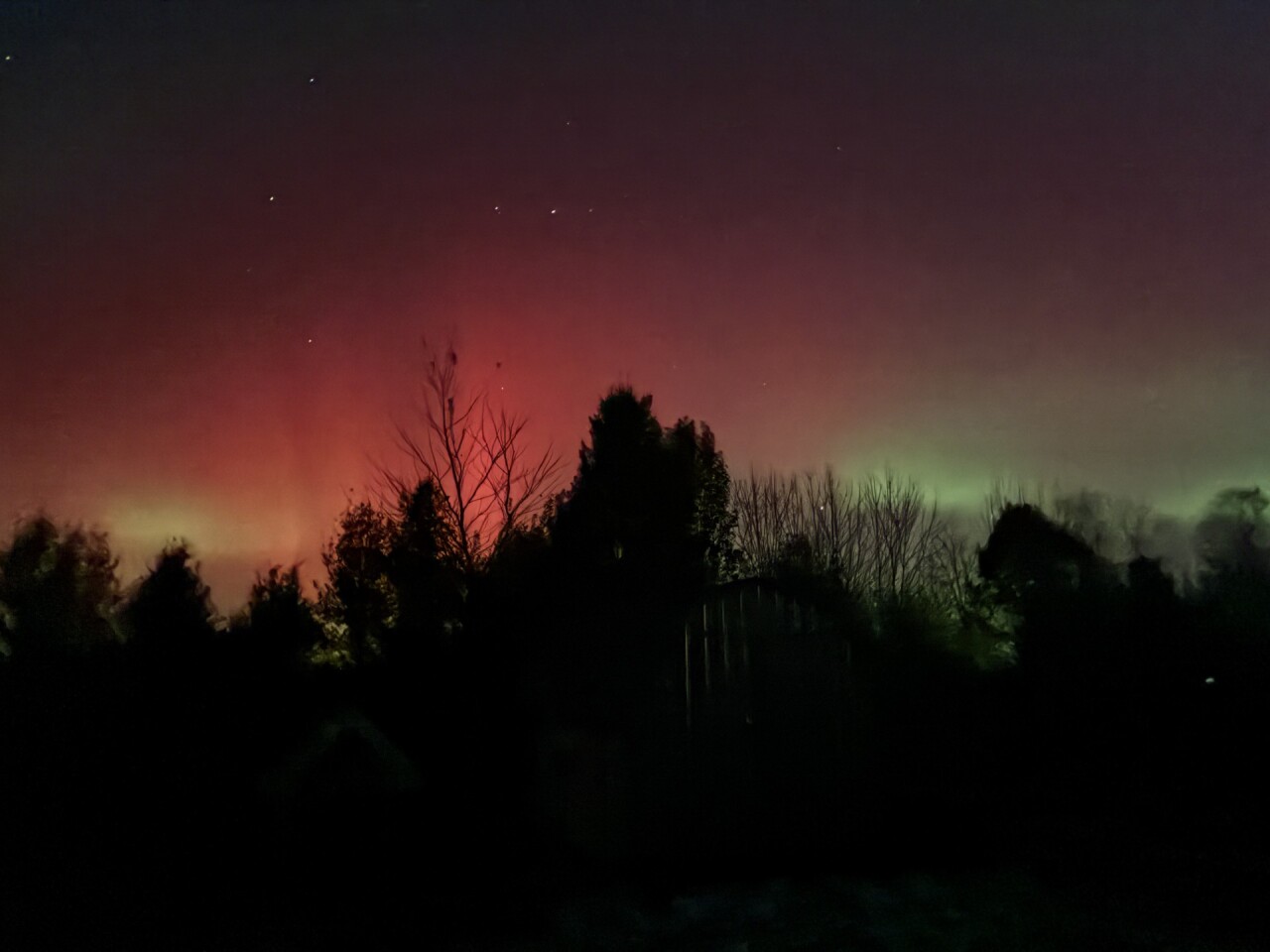CINCINNATI — It's the story that is likely flooding your social media feed this morning — the auroras could be seen in the Tuesday evening skies.
And it's being described as an "ultra rare" event from astronomers.
Between 8:30 p.m. and 11 p.m. Tuesday, the northern lights illuminated our sky and photos came in quickly from across the Tri-State as skygazers caught the event.

Former Cincinnati Observatory astronomer Dean Regas said the light show dimmed to "just barely at the edge of naked eye vision" after 10 p.m.
The auroras were visible because of a what is called a severe geomagnetic storm, classified as a G4 storm.
A severe geomagnetic storm like this can bring auroras much farther south into the United States. Reports of auroras have been coming in from places like Florida, Arizona and Texas.
"Auroras are caused by massive eruptions on the surface of the sun. Solar material blasts off the sun and rockets through space at over one million miles per hour. After several days that material slams into the Earth’s magnetic field and creates northern lights," said Regas.

The Associated Press reports that over the past few days, the sun has let out several bursts of energy called coronal mass ejections that were anticipated to reach Earth early Tuesday night and into early Wednesday.
We asked about any repeat performances from the auroras this week.
"Possibly," said Regas. "The sun is still extremely active and is sending more material our way. Stay tuned and keep looking up!"
When looking at the forecast from NOAA, they are still indicating a G4 storm through Wednesday afternoon. The storm decreases to a G3 storm this evening, which might remove our area from seeing the auroras again. But don't rule it out! Check the northern sky after 7 p.m. again tonight.

The sun is at the maximum phase of its 11-year activity cycle, which is making northern light displays more common and widespread, the AP reported.
Last year, the strongest geomagnetic storm in two decades hit Earth and produced light displays across the Northern Hemisphere.
See more photos of the aurora in the Tri-State, sent to us by viewers, below:









